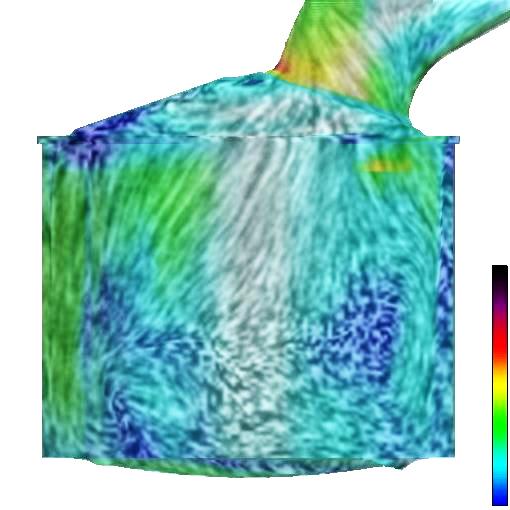| The State of the Art in Flow Visualization: Dense and Texture-Based Techniques  ( 5 star web page )
( 5 star web page )
|

|
Flow visualization has been a very attractive component of scientific visualization research for a long time. Usually very large multivariate datasets require processing. These datasets often consist of a large number of sample locations and several time steps. The steadily increasing performance of computers has recently become a driving factor for a reemergence in flow visualization research, especially in texture-based techniques. In this paper, dense, texture-based flow visualization techniques are discussed. This class of techniques attempts to provide a complete, dense representation of the flow field with high spatio-temporal coherency. An attempt of categorizing closely related solutions is incorporated and presented. Fundamentals are shortly addressed as well as advantages and disadvantages of the methods.
An example of circular flow at the surface of a ring for comparing FlowVis classifications: (left) direct visualization by the use of arrow glyphs (middle) texture-based by the use of LIC and (right) visualization based on geometric objects, e.g. streamlines.
The Spot Noise hierarchy of related research. Children in the hierarchy build upon the work of their parent.
The LIC hierarchy of related research. Node labels correspond to paragraphs in the text, which then lead to specific entries in the bibliography.
Visualization of flow past a box using spot noise (left) and LIC (right). Click here to download the full Spot Noise MPEG animation of the flow past the block. Click here to download the full LIC MPEG animation of the flow past the block with a velocity mask applied to highlight areas of flow with lower velocity magnitude.
Dye injection is used to highlight areas of the flow in combination with a low-contrast LIC texture. The data set is a slice through an intake port and combustion chamber from CFD.
The classification of texture advection and GPU-based techniques. The columns indicate the visual mapping used while the rows indicate the advection scheme.
Snapshots from the visualization of a time-dependent surface mesh composed of 79K polygons with dynamic geometry and topology. This intake valve and piston cylinder can also be used to analyze the formation of wall film, the term used to describe the liquid buildup on surfaces. Click here to download the full MPEG animation of the dynamic mesh above.
Related dense, texture-based flow visualization methods. Each method is compared with respect to the density of the resulting visualization.
Results from A Texture-Based Framework for Spacetime-Coherent Visualization of Time-Dependent Vector Fields, by D. Weiskopf, G. Erlabacher, and T. Ertl. From left to right: UFLIC, LEA, DLIC, Unsteady Flow Convolution with and without a velocity mask. Click on the images for an animation of the result.